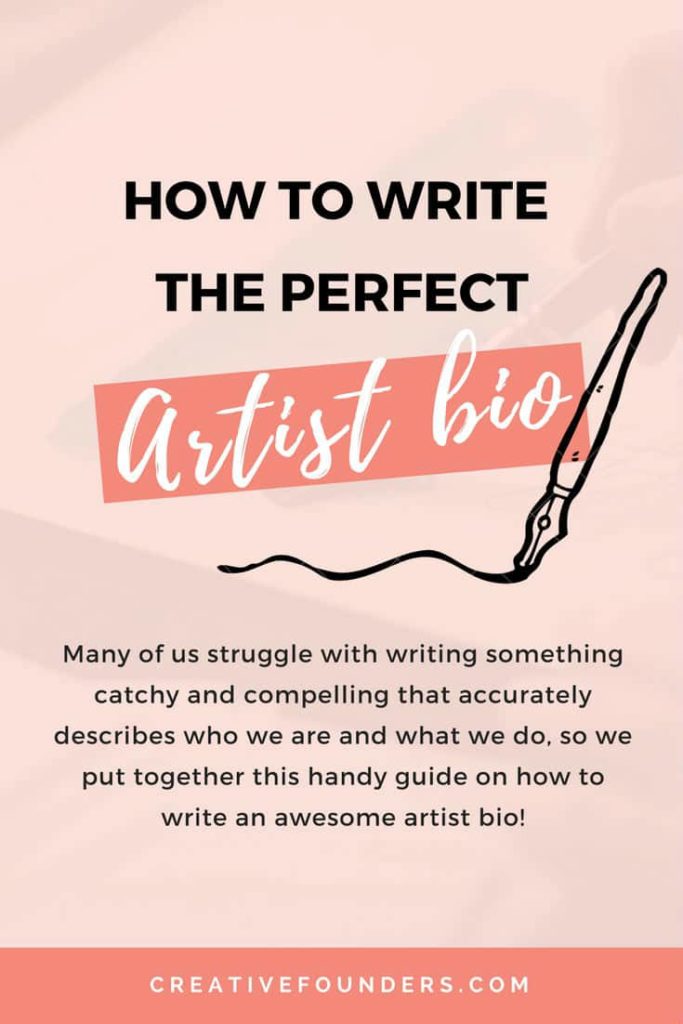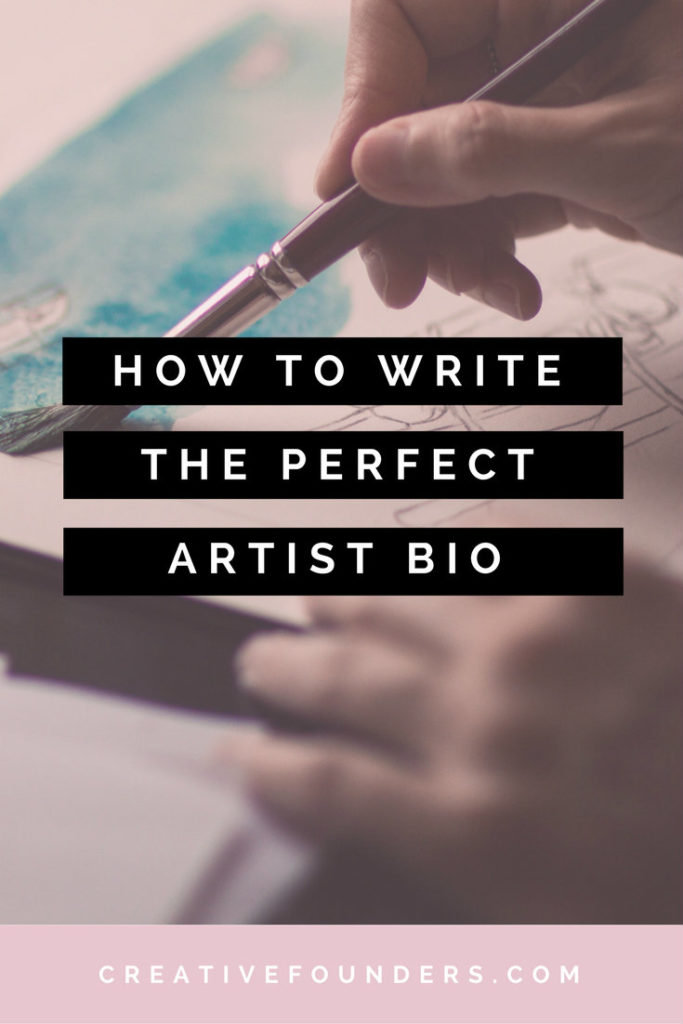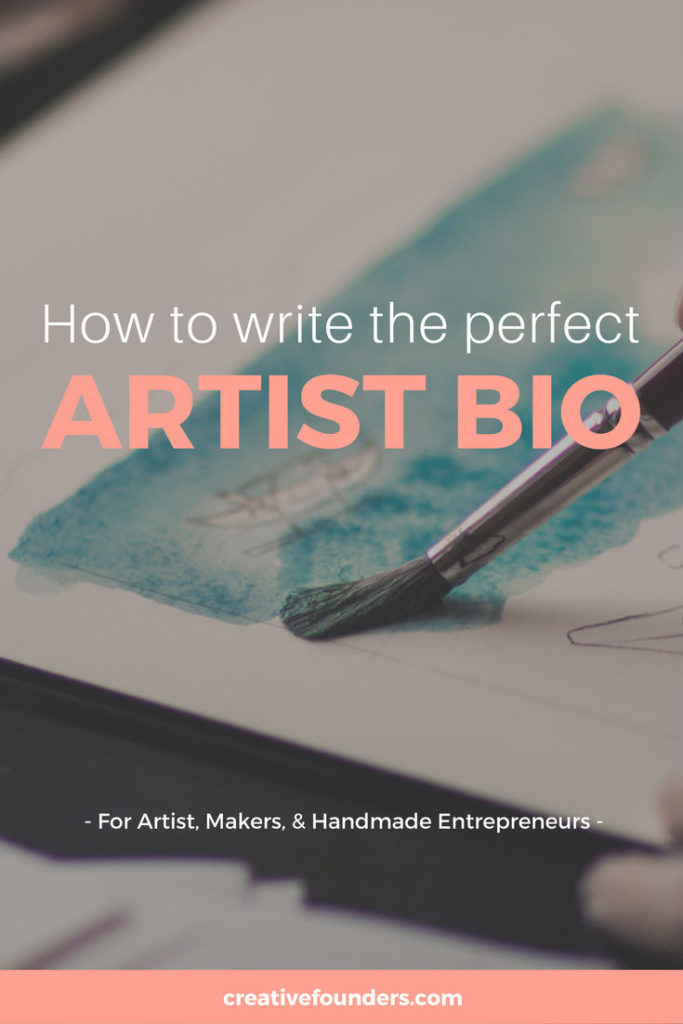ARTIST BIOS: EVERYTHING YOU NEED TO KNOW
As an artist, one the most important tools you have to market yourself and your brand is your artist bio. This single paragraph describes who you are and what your vision is all about, and it’s basically your first introduction to potential clients. We know that many artists struggle with trying to come up with something catchy and compelling that accurately describes who they are and what they do, so we put together this handy guide on how to write an awesome artist’s bio.

HOW TO WRITE THE PERFECT ARTIST BIO
WHAT ARE ARTIST BIOS AND WHY ARE THEY IMPORTANT?
An artist’s biography is basically a brief paragraph that explains who you are as an artist, why you do what you do, and what you create. Artist’s bios are almost always written in the third person and are usually around 150 words. Your bio can be placed on your website, in your portfolio or submitted with your work for an exhibition or show.
Many people confuse the artist’s bio with an artist’s statement or even a CV, but they’re actually quite different. While an artist’s statement provides information about your artwork like a particular collection of works or a particular piece, and a CV lists your experience and accomplishments, your artist’s bio should be all about you, your practice and your philosophy.
Artist bios are important because they provide potential clients or fans with an introduction to you as an artist so that they can better understand you and your work. Your artist biography can also be great for SEO, as the keywords in your bio will help search engines connect you to people who are looking for artists who do the type of work you do.
WHAT SHOULD I INCLUDE IN MY ARTIST BIO?
At the very least your artist’s bio should include:
– Your name
– The medium and techniques you use
– Key themes in your artwork
– Your philosophy
Other information you may or may not want to include could be your influences, previous experiences like education, exhibitions or awards received and current projects or collaborations. Remember though, your bio should be roughly 150 words, so you need to keep it brief and only include the most relevant information.
SOME THINGS TO THINK ABOUT BEFORE WRITING YOUR ARTIST’S BIO
Before sitting down and writing your artist’s bio, think about what makes your work special. Do you use a unique medium or technique? Does your work speak to a particular segment of society or provide value to a certain group of people? What do you want to achieve with your work and what do you hope people take away from it?
We know that it can be difficult to try and write about yourself, especially when you’re trying to big yourself up and make a good impression on potential clients. We recently watched a great TED Talk by Simon Sinek about why great leaders inspire action, and he suggested that when talking about yourself, you should always talk about the ‘why’ first.
Sinek says that most people talk about what they do and how they do it, but that doesn’t really inspire or motivate people to buy a product or become loyal to that person or brand. However, he said that when people talk about why they do what they do, it resonates with other people on a deeper more heartfelt level. So before writing your artist bio, think about why you create what you do and use that as a starting point.
TIPS ON WRITING ARTIST’S BIOS
Keep your bio simple, straightforward and to the point. After all, the goal is to help the reader better understand you and your vision, so you don’t want to confuse them with flowery language or jargon or lose their interest by rambling off on a tangent.
* Try not to use superlative language (i.e. ‘the best’ or ‘the most amazing’) or exaggerated claims. Yes, you want to make yourself sound good, but don’t overdo it. After all, people have a tendency of seeing right through the overblown hype.
* Try to make your bio flow nicely. Remember, this is not like a CV where you simply list your accomplishments. Your bio should be engaging for the reader and inspire them to find out more about you and your work.
* Proofread your bio for spelling mistakes and grammatical errors. You may also want to get someone else to read it over for you so they can catch anything you might have missed and offer suggestions for improvement.
Still stuck for ideas? Do an Internet search for other artist’s bios and make notes of what you like and dislike about them. While we definitely don’t suggest copying another artist’s bio word for word, you can get some great ideas of what works from looking at other people’s examples.







